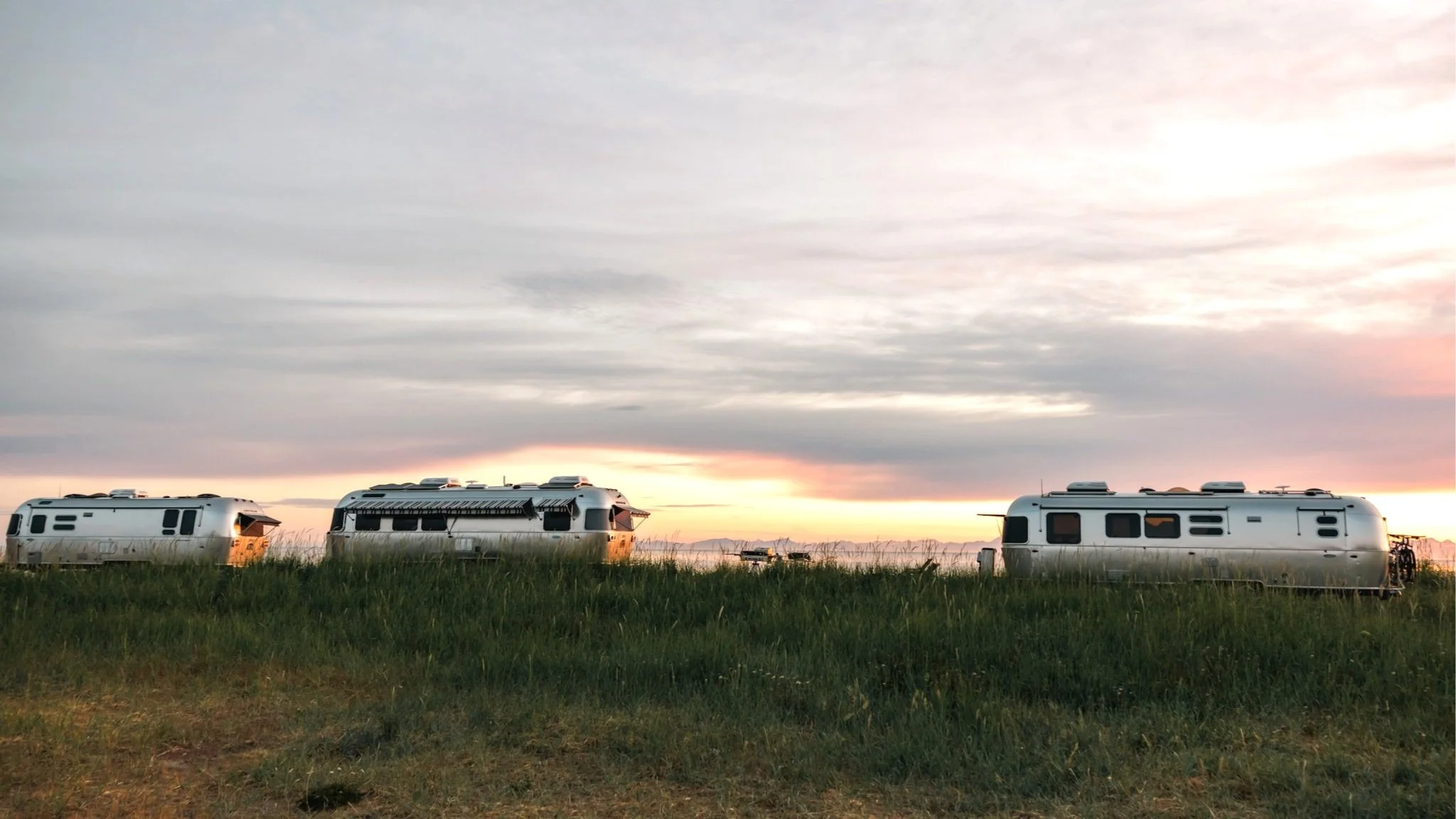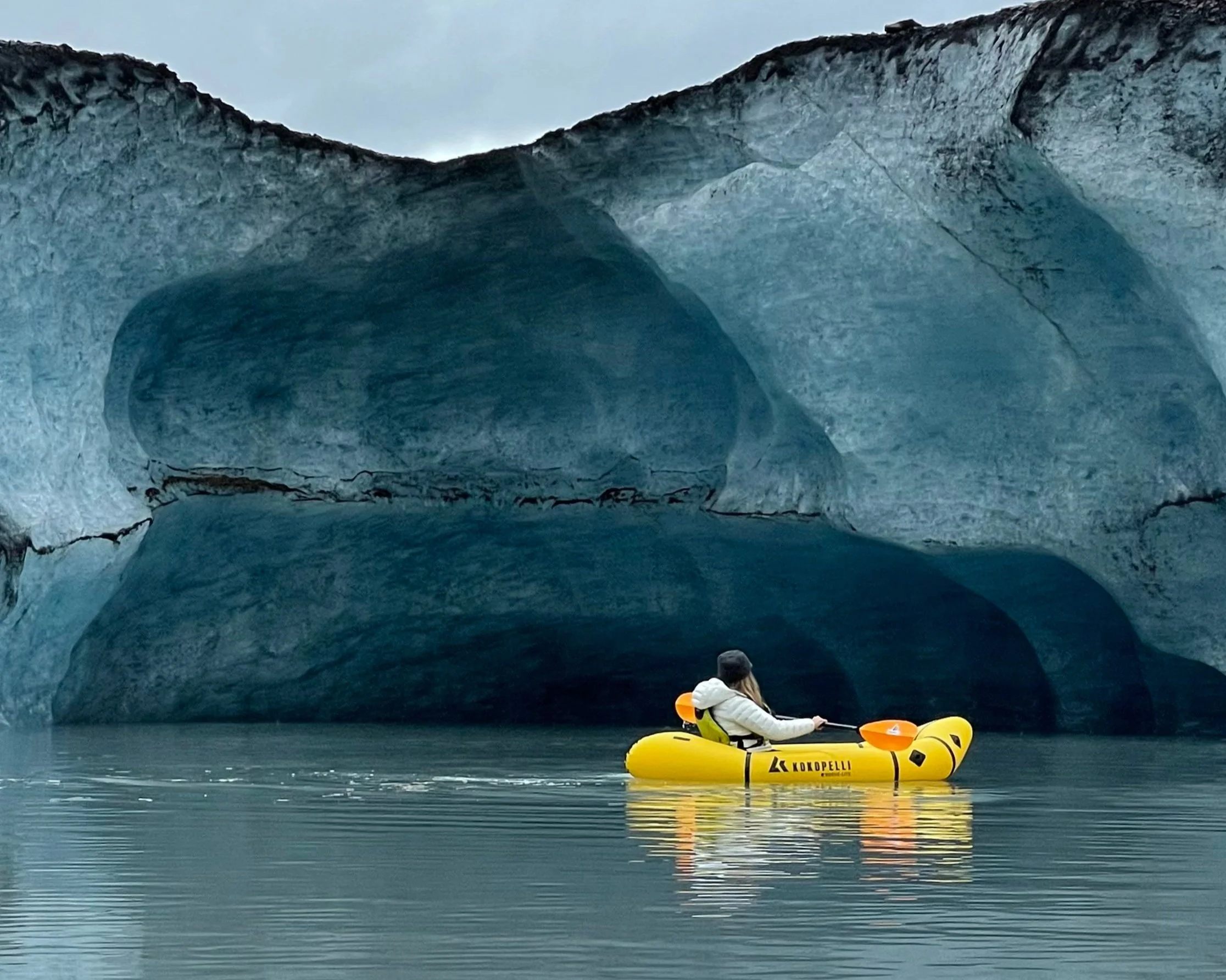Alaska in an Airstream
Seven Tips for the RV Adventure of a Lifetime
Just a heads-up, some of the links on this page are affiliate links, and as an Amazon Associate, I earn from qualifying purchases. That means I may earn a tiny commission if you click on them and make a purchase. It won't cost you a single extra penny, but it does help us put fuel in the tank. Rest assured, I only link to our absolute favorite items or those recommended by trusted friends. All other links are intended to provide additional information or solely on my recommendation based on a positive experience. Thanks for being an accomplice in our travel addiction!Of the many ways you can travel to Alaska, I believe traveling in an RV is the most immersive and authentic way to experience the last frontier. Alaska is a vast and beautiful state, offering a truly unique and unforgettable experience to those who visit. However, with so much to do and see, it can be overwhelming.
To make the most of your time in Alaska, I've compiled my top 7 tips, drawing inspiration from our unforgettable summer expedition in our Airstream. As a bonus, I’ve also included our route, a few of our favorite excursions and activities, boondocking spots, and links to useful items.
Tip #1- Determine How Long to Visit
Before planning your trip to Alaska, it's important to determine the duration of your stay and the specific regions you want to explore. This will help you better prepare for the trip, decide on activities, and choose the most suitable routes. It's worth noting that Alaska is a vast state, and underestimating its size can lead to time constraints. For instance, even with a three-month stay, my family couldn't cover everything we wanted to do. However, if you have more free time than we did (due to work or school), you can explore more regions in a shorter time. Regardless, I recommend spending an entire summer in Alaska to fully experience the state.
Tip #2 - Get a Current Copy of the Milepost
Everybody who’s traveled to Alaska will tell you you need to get a copy of The Milepost. The Milepost is a comprehensive guide providing detailed mile-by-mile accounts of over 15,000 miles of road spanning Alaska, Yukon, Northwest Territories, British Columbia, and Alberta. There are over 700 pages with in-depth information about various aspects, such as campgrounds, fishing spots, gas stations, dining establishments, and tourist attractions, with a road log of every significant route and the attractions along the way. It's updated annually and is one of the best planning tools for road travel from Canada to Alaska. We used ours one weekend to travel the Denali Highway, a less-traveled road that goes through the center of the main Alaska highways. There was a spot in the Milepost that said to watch for moose at a specific mile marker, and we joked that it must have been staged because a moose came right out on the road right at that very marker!
Tip # 3 - Vehicle and RV Maintenance and Preparation
Before you head north, ensure that your RV and, if you have a tow vehicle, are in top operating order. Depending on your starting point, plan an oil change somewhere just before crossing the Canadian border. Also, get your tires checked or changed, and make sure your spare is good and you have all the proper tools. (I'm talking to you newer Airstream owners - your Airstream did not come with a tire changing kit, and the tools for your tow vehicle will likely not work.) Once you enter Alaska, services are available in some larger cities. Still, parts are tough to come by, so ensure you take care of all maintenance issues before heading north. Also, the roads are better than some people might tell you, but there are large frost heaves on the road, basically like a big speed bump, so you want to ensure that everything is well secured inside your RV.
Tip #4 - Campground Reservations and Boondocking
If you have followed us, you know that we don’t generally book campgrounds in advance and that boondocking is our preferred way of camping in our Airstream. Well, the good news is that there is an abundance of public land and summer sun to power your solar panels in Alaska. With just a few boondocking essentials, you can extend your water supply and time off the grid. To locate spots suitable for our Airstream, we used iOverlander and always had a plan B. The few RV parks we did stay in were easy to book with no more than a day or two advance notice. The only campgrounds we booked months in advance were in Denali National Park.
Tip #5 - Self Sufficiency and Caravans
We traveled to and from Alaska in a small caravan of RVs, which I highly recommend. It provided peace of mind that if something went wrong along the way, we would have help, but most of all, we enjoyed the community of our friends. Everyone took a role in making sure that at least one of us had necessary items like tools, a few common spare parts, recovery tracks, tow straps, air compressor, etc. We each purchased walkie-talkies so we could communicate along the drive and give a heads-up to others along the way about anything to avoid or stop for. There were many callouts for wildlife that one of us may have missed without the group. With that said, we did not all travel together 100% of the time, so it was critically important that we were also self-sufficient. Always carry a complete emergency roadside kit, and never let your gas tank get low. It is wise to carry extra gas and top off your tank whenever you see a gas station, as there can be quite a distance between them.
Tip #6 - Key Items to Bring
Pack bug spray, sunscreen, bear spray, and clothing for all climates. It was warmer in Alaska than I expected, but there were days in Denali when it snowed, and rain seemed to be a constant in Valdez, so layering is key. Bring fishing poles, or rent them from a local outfitter by the day. Instead of kayak, we purchased packrafts that fold up small, allowing us to paddle several glacier lakes and ride a portion of the Russian River. You will want binoculars, camera gear, and lots of memory. I highly recommend crampons for stability when exploring on the ice. I would also suggest purchasing Xtratuffs, aka "Alaska Slippers," as they are handy for almost every outdoor experience, and you will fit right in with the locals. To make it easier, I've curated a storefront with a few of my favorite RV to Alaska essentials, as well as some of our favorite adventure gear items.
Tip #7 - Crossing the Canadian Border
Crossing the border is not as intimidating as it can seem but there are a few things you need to know in advance.. Be sure to have a passport for everyone that is current for the duration of your travel. While it was never requested, you will need vehicle registration and a valid driver’s license. Border patrol may ask to inspect the inside of your RV or ask you about restricted items such as firearms, certain foods, plants, etc. If you travel with bear spray, ensure it is marked as such. Also, make sure you know the current rules for traveling with pets. For our dog, we only needed a copy of a current rabies vaccine.
Our Route and Recommendations
Our Route
We crossed from Idaho at the Eastport - Kingsgate Border Crossing on May 5th. We visited Banff, Jasper, Kootenay, and Yoho for two weeks before heading further north. On May 21st, we started on the Alaskan Highway, crossed into Alaska on May 28th, and spent our first night at a boondocking spot just southwest of Tok. We circled and drove every road system, excluding the Dalton and Steese Highway. We spent our last night visiting Chicken and Eagle and exited via the Top of the World Highway, crossing back into Canada on the ferry to Dawson City on September 3rd. (If you cross here, be sure to check when it opens and closes for the season). We had a magical evening watching the Northern Lights at Watson Lake and then continued down the Cassiar Hwy to Prince George. We parted ways with our friends, headed to Banff again, and crossed back into the states in Babb, Montana, on September 9th.
Three of our Favorite Boondocking Spots
Resurrection River - Near Seward and Kenai Fjords National Park. It offers impressive views in all directions and regular Bald Eagle sightings.
Tangle Pond - Small pond off Portage Glacier Road near Byron Glacier and heading toward Whittier. Great area for paddling and trout fishing.
Susitna River Dispersed Camping - This is a beautiful spot on the river and close to Talkeetna. Be sure to keep an eye on rising river levels.
Paid Excursions
Alaska offers a plethora of activities, and if you're looking for paid excursions, here are a few that we recommend including in your budget.
Denali Flightseeing tour out of Talkeetna - There are several options, but we booked the Summit Tour with a glacier landing through Talkeetna Air. This option takes you to the summit's peak at over 20,000ft and offers the most spectacular view you will likely ever see in a lifetime.
Brooks Falls bear viewing day trip to Katmai National Park from Homer - The iconic Alaskan adventure where you can watch the bears pluck salmon right from the falls. Unfortunately, our tour was canceled because of the weather, but it’s on our return list.
Kenai Fjords National Park Cruise - Whales, whales, and more! The coastal scenery here is magical. We booked our tour with Major Marine Tours in Seward.
Budget Friendly
Alaska can be an expensive destination, but there are also plenty of free and budget-friendly activities to enjoy.
Ranger Discovery Hike in Denali—You can only sign up for this hike once you are in the park and must do so at least one day in advance of the hike. All hikers must be present at signup, and they fill up fast. Very important note: They are very serious about safety, so it’s critical to review the requirements and come prepared rather than be turned away on the day of the hike.
Salmon Fishing - Pack a fishing pole or rent one from a local outfitter. Even if you’ve never been fishing before, your chances of catching a salmon are excellent, and to really understand the culture of the coastal communities of Alaska, I highly recommend this experience. If you want to stock your RV freezer with your fresh catch, ask the locals where to have them processed after the catch. Be sure to purchase an Alaska fishing license and follow all rules and regulations.
Paddling the Glaciers - We paddled several places, but a highlight was Grewingk Glacier in Kachemak Bay State Park. We did this hike as a day trip using Mako’s Water Taxi service from Homer. Our packrafts were the perfect solution for this excursion and saved us money on rental kayaks.
Northern Lights - One of our most captivating experiences. The Northern Lights, or Aurora Borealis, grace the night skies as daylight diminishes in late summer and early fall. Apps like My Aurora Forecast and the University of Alaska’s Aurora forecast website help alert you to high-potential nights. We didn’t see our first Aurora until right around Labor Day on our return south, so the longer you stay, the better your chances are.
As you plan your trip, keep in mind that Alaska is a vast and rugged state, and it's important to be prepared for the unexpected. With a little planning and preparation, your summer RV trip to Alaska is sure to be a memorable one. And if you have any additional suggestions or questions, please feel free to leave a comment - we always love to hear from fellow travelers!






